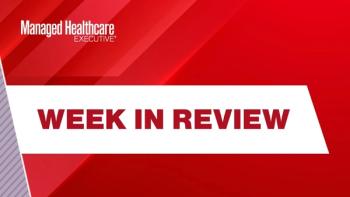
Level-funding growing in popularity among employers
Employers are increasingly utilizing level-funding, a hybrid self-insurance model, to gain flexibility and control costs.
More employers are opting to self-insure their employee benefits in order to gain more flexibility and control in plan design and financing. A well-designed self-insured plan enables companies to reap the benefits of their cost containment efforts and wellness activities, rather than having to pay a monthly premium to a commercial insurer based on an arbitrary set of rating restrictions.
Level-funding, a self-insurance hybrid, further enables companies to benefit from the regular and predictable cost of a fully insured plan, while only paying for the healthcare costs actually incurred by employees. This approach can potentially provide a 30 to 40 percent annual refund on health benefit costs.
With level-funding, employers pay a set amount each month to a healthcare services company to cover administrative costs, fees and embedded stop-loss insurance.
Companies put aside enough cash to cover anticipated claim expenses, and the monthly premium remains level for the entire year. If claims are less than the funded amount at the end of the year, a rebate or credit is issued. If claims go over the funded amount, companies are protected by stop-loss.
Why Level-Funding Is Advantageous
Level-funding delivers all of the same advantages of self-insurance, including greater flexibility than commercial insurance, as well as a number of cost-saving benefits, such as:
- Helping employers tailor plans to the specific health needs of a workforce population, especially if guided by the right healthcare services company
- Generating as much as three percent immediate savings because state taxes are eliminated on most self-insured plans
- Eliminating carrier profit margins and risk charges
Furthermore, level-funded plans are exempt from many of the federal healthcare law’s health insurance taxes, which will be onerous for the fully-insured market, exceeding $100 billion over the next several years.
Additionally, level-funded plans are not subject to state-mandated benefits, the jurisdiction of the states and, for the most part, litigation in state courts or the appeal and complaint procedures of the insurance departments of each of the states.
With level-funded plans, employers only pay for claims and the cost of administering them, and they can conveniently be combined with Flexible Savings Accounts (FSA), Health Savings Accounts (HSA) and Health Reimbursement Accounts (HRA),
NEXT: Which companies are most suited for level-funding?
Ideally, level-funding works best for companies that are:
- Looking for an affordable option that makes it possible for them to continue offering employer-sponsored benefit
- Interested in self-insuring, but want to avoid the risk of unpredictable monthly costs
- Establishing a culture of health and wellness -- and have 25 or more employees
[viii]
How to Make the Most of Level-Funding
In order to simplify the transition to and administration of a level-funded plan, companies should turn administrative responsibilities over to a healthcare services partner that has considerable expertise and a proven track record for:
- Maintaining eligibility
- Providing customer service
- Adjudicating and paying claims
- Preparing claim reports
- Negotiating, obtaining and renewing stop-loss placement
- Conducting enrollment information meetings
- Arranging managed care services, such as access to preferred provider networks, coverage for alternative treatment programs including acupuncture and chiropractic services, prescription drug card programs that offer cost-saving opportunities and utilization review
Therefore, look for a healthcare services company that offers secure data analytics for both remote and real-time care. They should also provide an inexpensive vehicle for coordinating online tools that identify at-risk members, their patterns and treatments for various ailments – from diabetes to heart conditions. Robust data analytics allow level-funded plan managers to evaluate employee information, including age, chronic illness, risk factors and gaps in care, and update medical conditions, compare previous costs to projected expenditures, and intervene with optimal prevention and wellness programs.
A healthcare services company that focuses on population health and excels at risk analysis is critical because high-risk patients create higher costs. An employer needs to be able to identify at-risk individuals in order to develop a cost-effective care strategy. This means working with a healthcare services company that is able to stratify risk across a patient population to determine where and how to allocate limited resources.
Healthcare data analytics plays an important role in level-funding by providing information relevant to population health management, such as determining the chances of a relapse, the likelihood of noncompliance, and the progression of chronic disease. The key to making the most of level-funding is to streamline access to care with customizable care plans based on an individual’s risk profile and needs. Targeting health issues, rather than simply implementing a general health and wellness program, is essential for effective long-term population health management.
By partnering with a healthcare service company and provider group, employers can also take advantage of deep discounts and give employees greater access to coordinated care. Some plans are designed exclusively around chronic disease and include educational materials, one-on-one counseling, transportation to a hospital or doctor’s office, and assistance in coordinating care among physicians and other caregivers. Health claims and other medical data are used to identify members with chronic conditions and provide them with the tools and support they need to better manage their health.
Berardo is chief executive officer of MagnaCare.
Benefits Pro; April 15, 2013;
Aug. 19, 2014;
Newsletter
Get the latest industry news, event updates, and more from Managed healthcare Executive.

















































